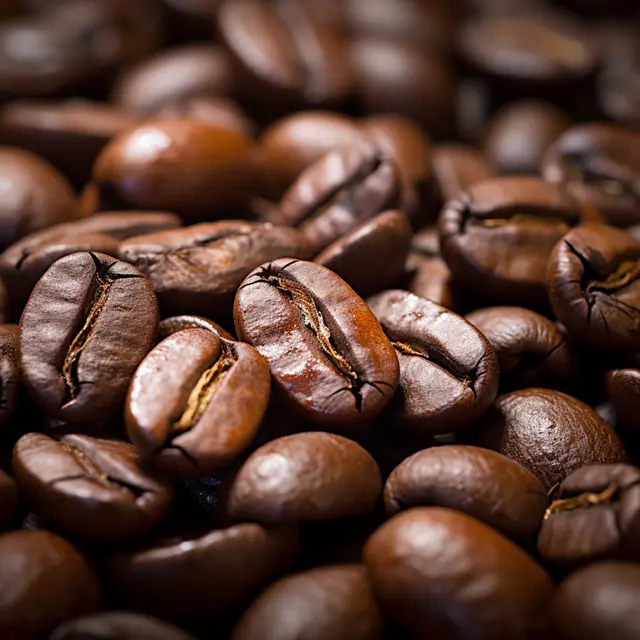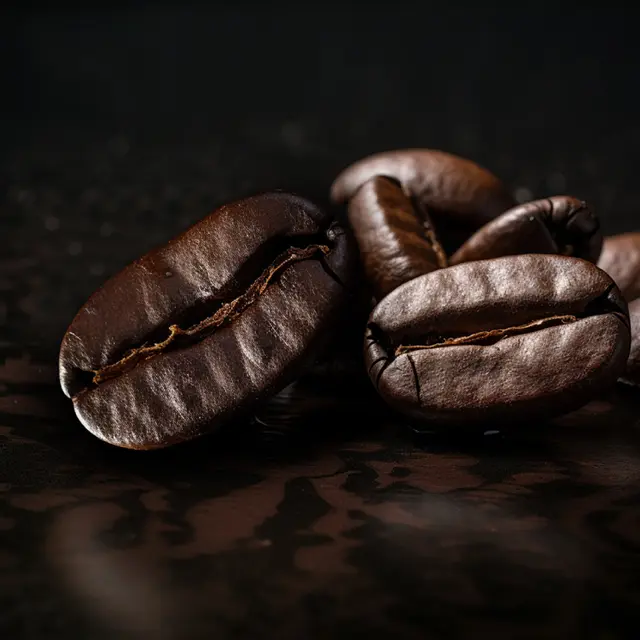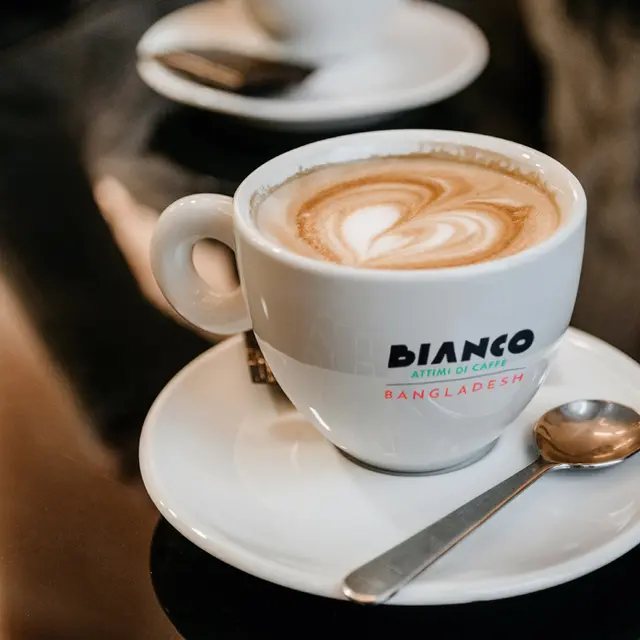Our Beans
Bianco Beans Origins
- Brazil
- Salvador
- Uganda
- Ethiopia
- Honduras
- Vietnam
- Colombian Supremo
- India
- India - Kaapi Royale
Arabica Coffee Beans
Arabica coffee is known for the exquisite flavour and captivating aromas. The Arabica beans are
widely regarded as the gold standard in the world of coffee. The coffee has evolved into a symbol of excellence, captivating discerning
taste buds with the vibrant coffee culture that thrives today.
THE ORIGIN
The origins of Arabica coffee can be traced back to the highlands of Ethiopia, specifically to the region known as Kaffa, around 1,000 BC. The Oromo people of Ethiopia were the first to cultivate and consume coffee.
In the 15th century, the cultivation and consumption of coffee spread from Ethiopia to the neighbouring Arabian Peninsula, particularly to the regions of Yemen and the Red Sea coast. Today, Arabica coffee is prized for its delicate flavours, lower caffeine content, and nuanced aromas. It remains a staple in specialty coffee markets and is enjoyed by coffee enthusiasts around the world.
THE TASTE
Arabica coffee has a smooth, sweet, and complex flavour with hints of chocolate, nuts, fruit, and berries. The exact flavour profile will vary depending on the region where the beans were grown, the roasting process, and the brewing method.
THE GROWING
The ideal growing conditions for Arabica coffee are:
Altitude: Arabica coffee grows best at altitudes of 1,200 to 2,000 meters (3,900 to 6,600 feet) above sea level.
Temperature: Arabica coffee prefers a cool, temperate climate with average temperatures between 15 and 24 degrees Celsius (59 and 75 degrees Fahrenheit).
Rainfall: Arabica coffee needs an annual rainfall of 1,500 to 2,500 millimeters (60 to 100 inches).
Soil: Arabica coffee grows best in well-drained, acidic soils with a pH of 5.5 to 6.5.
ROAST LEVEL
Bianco arabica coffee beans are roasted at a medium temperature of 210° C – 219° C. Medium-roasted coffees often strike a balance between the natural flavours of the coffee beans and the development of complex flavours through the roasting process. This roasting process tends to retain the original flavours of coffee. These medium-bodied beans provide a smooth and satisfying mouthfeel without overwhelming the palate.

Robusta Coffee Beans
Robusta coffee has a history that is relatively more recent in comparison to Arabica coffee. With
a history rooted in Africa and a growing presence in various regions worldwide, Robusta coffee beans offer a flavor profile and
characteristics that set them apart.

THE ORIGIN
Robusta coffee is native to the western and central regions of sub- Saharan Africa. It was first discovered and documented in the Democratic Republic of Congo (formerly known as Zaire) in the late 19th century by a French botanist named Antoine Chevalier. The plant was initially named Coffea robusta due to its robust and resilient nature. In the early 20th century, robusta coffee was introduced to Southeast Asia, primarily Vietnam, which has become one of the largest producers of robusta coffee in the world.
THE TASTE
Robusta coffee has a bold, earthy flavour with hints of chocolate, nuts, and wood. It is often described as being more bitter and less acidic than Arabica coffee. Robusta coffee also has a higher caffeine content than Arabica coffee, at about 2.7% compared to 1.5%.
THE GROWING
The ideal growing conditions for Robusta coffee are:
Altitude: Robusta coffee grows best at altitudes of 600 to 1,200 meters (2,000 to 3,900 feet) above sea level.
Temperature: Robusta coffee prefers a warm, humid climate with average temperatures between 20 and 28 degrees Celsius (68 and 82 degrees Fahrenheit).
Rainfall: Robusta coffee needs an annual rainfall of 1,500 to 2,500 millimeters (60 to 100 inches).
Soil: Robusta coffee grows best in well-drained, loamy soils with a pH of 5.5 to 6.5.
ROAST LEVEL
Robusta coffee is often roasted darker than Arabica coffee, as this brings
out the coffee’s bold, earthy flavour.
Decaffeinato
Decaffeinated coffee beans, often referred to as decaf, offer the pleasure of enjoying the flavours,
aroma, and ritual of coffee without the stimulating effects of caffeine. The decaffeination process typically removes about 97—99%
of the caffeine present in the beans, meaning there may still be a small amount remaining. On average, an 8-ounce cup of decaf coffee
contains around 2—5 milligrams of caffeine, significantly less than regular coffee, which typically contains 80—100 milligrams per cup.
AMOUNT OF CAFFEINE
Decaffeination removes about 97% or more of the caffeine in coffee beans. A typical cup of decaf coffee has about 2 mg of caffeine, compared to a typical cup of regular coffee, which has about 95 mg of caffeine.
DECAFFEINATION PROCESS
Usually there are 4 methods of decaffeination.
Solvent-based processes: This method involves soaking the beans in a solvent, typically methylene chloride or ethyl acetate, which selectively extracts the caffeine. The beans are then rinsed to remove any residual solvent.
Carbon dioxide (C02) method: In this method, compressed carbon dioxide is used as a solvent to extract caffeine. The C02 is pressurised and passed through the coffee beans, where it binds with the caffeine molecules. The caffeine-laden C02 is then depressurized and evaporated, leaving behind decaffeinated beans.
Swiss water process: The Swiss Water Process is a solvent-free method. It involves soaking the beans in hot water to extract caffeine and flavours. The water is then passed through a carbon filter that selectively captures the caffeine molecules.
Triglyceride method: The triglycerides are mixed with the beans, and the caffeine is dissolved into the oil. The oil is then separated and heated to evaporate the caffeine, leaving behind decaffeinated beans.

Speciality Gourmet
Bianco specialty gourmet coffee is sourced from the finest plantations across the globe. Through a slow roasting process, the beans preserve their distinctive qualities, reflecting the nuances of the soil, climate, and cultivation methods. True coffee connoisseurs can indulge in its unique properties.

CRITERIA OF GOURMET BEANS
- Well-balanced flavour profile
- The beans are uniformed in size, shape, and colour within a given lot
- Perceived acidity
- Pleasant aftertaste
SOURCING STRATEGY
Bianco maintains a comprehensive sourcing strategy that combines direct relationships with coffee farmers, collaborations with trusted suppliers, and partnerships with coffee cooperatives. This strategy ensures access to a diverse range of specialty coffee beans from different regions worldwide.
SAMPLING
Bianco’s team of experienced cuppers and sensory experts continuously evaluates coffee samples from different origins. They conduct rigorous cupping sessions to assess the beans aroma, flavour profile, acidity, body, and other sensory characteristics.
QUALITY CONTROL
Bianco maintains stringent quality control measures throughout the sourcing and roasting process. Advanced laboratory facilities are employed to assess the beans quality, The beans chosen in the end are selected for their utmost quality.
